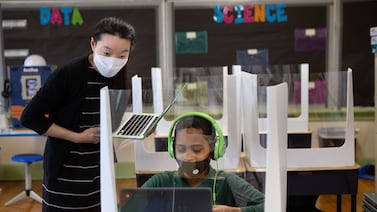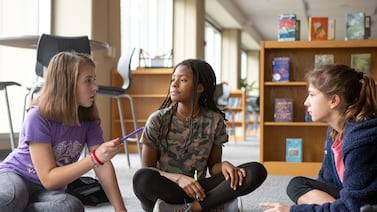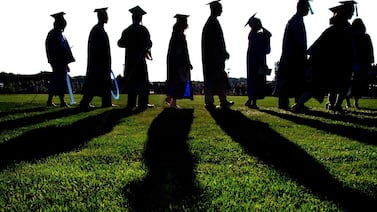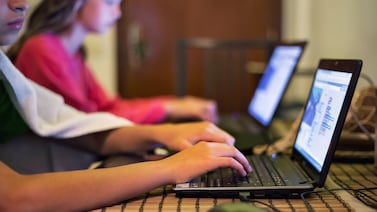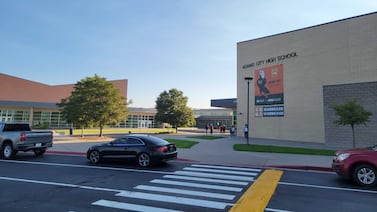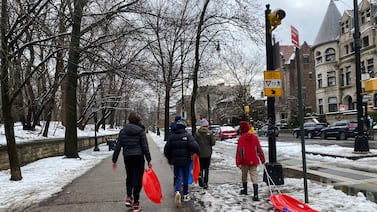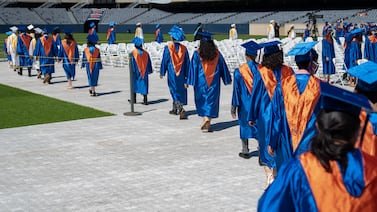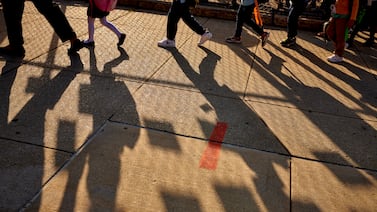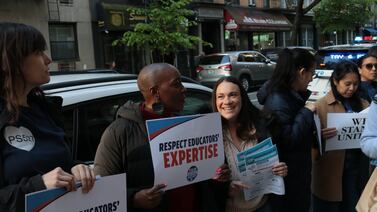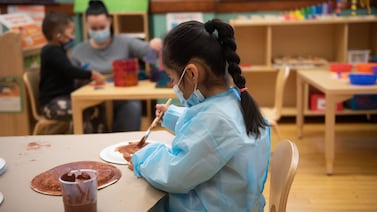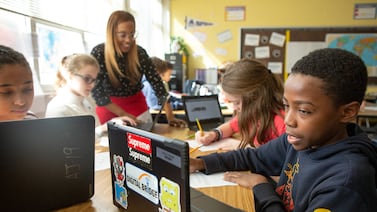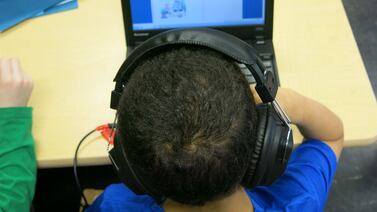Remote learning
We’ve got answers to that and other questions from a new tranche of state testing data
A state education official revealed that some districts are tapping virtual learning to support immigrant students frightened to attend school.
The state bet big on tutoring and summer learning programs after the pandemic.
The full impact of the pandemic on high school graduation rates is still emerging. Students who were in elementary school when schools closed may need extra support now.
Some students questioned the wisdom of testing the city’s remote learning platform during a scheduled day off.
After a December exercise failed to prevent a remote day debacle in February, the city’s Education Department hopes the drill will demonstrate the systems’ ability to handle the load.
During an oversight hearing, local lawmakers grilled city officials about why families couldn’t log on for remote learning during a snowstorm on Feb. 13.
The action was not sanctioned by the district’s teachers union.
Parents and educators were frustrated by the morning’s tech problems, preventing teachers from conducting remote instruction, as promised.
Some districts are holding classes online to fill gaps caused by teacher shortages.
The remote learning practice comes as the city’s schools have faced multiple severe weather events this year.
The Class of 2023 were freshmen when the pandemic disrupted in-person learning. District data indicate 84% of those students graduated in four years, the highest rate in modern history.
Researchers also found that the share of CPS students enrolling in college recently has risen.
The public health crisis paused state testing, impacting how the state typically evaluates schools.
The tentative deal with the United Federation of Teachers includes annual wage increases between 3% to 3.5% over five years. It follows the pattern of raises set by District Council 37.
High school students, those who attend schools that serve grades 6-12, and other alternative programs will shift to remote learning on Friday.
Students’ struggle to recover from pre-pandemic disruptions is also a cause for concern, the new report says.
The project involved counting up technology such as tablets, laptops, desktop computers, printers, and smartboards.
The seismic shift that made devices more accessible to students than ever before has now pushed some teachers to fold technology more often into their lesson plans.
Although schools keep a record of devices, city watchdogs have criticized the education department for having no centralized system.

